Weapons
Miss Fireworks of 1954
Hula dancing on a bomb.
Leatherneck - Magazine of the Marines - Sep 1954
Posted By: Alex - Mon Jul 04, 2022 -
Comments (1)
Category: Awards, Prizes, Competitions and Contests, 1950s, Armed Forces, Weapons
The best defense against an atomic bomb…
"... is not to be there when it goes off."Advice which remains true to this day.

Manchester Evening News - Feb 18, 1949
Posted By: Alex - Sat Jun 18, 2022 -
Comments (2)
Category: War, Weapons, Atomic Power and Other Nuclear Matters, 1940s
Games Couples Play, #2
July 1947: Newlyweds Jane and Lloyd Gulledge of Dearborn, Michigan decided to play a couple of rounds of Russian roulette. Lloyd lost. "Police say they had been drinking."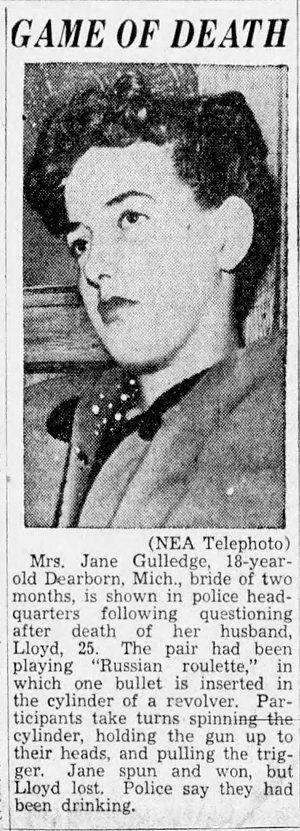
Lancaster Eagle Gazette - Jul 28, 1947

(L) Nevada State Journal - Jul 29, 1947; (R) Palm Beach Post - Aug 3, 1947
Related: Games Couples Play, #1
Posted By: Alex - Thu Jun 09, 2022 -
Comments (3)
Category: Marriage, 1940s, Weapons
Follies of the Madmen #534
Who knew that domestic life could be so medieval?Source.
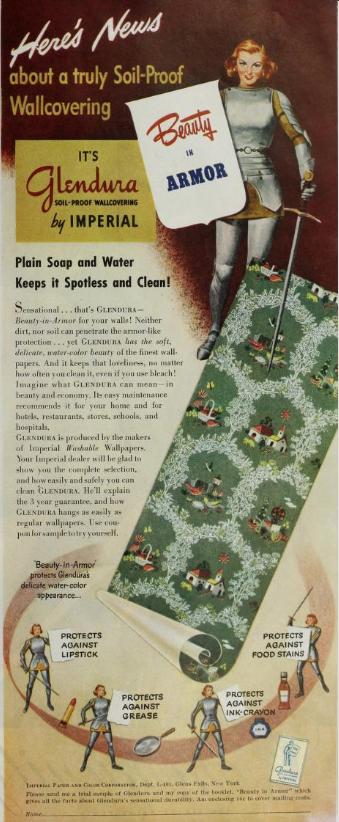
Posted By: Paul - Wed Jun 08, 2022 -
Comments (3)
Category: Domestic, Advertising, Weapons
Cutting a sheep in half with one stroke
Swordsmanship shows often used to include demonstrations of the ability to cut a dead sheep in half with one stroke.I've never been to a swordsmanship show, but I'm guessing that this particular display of ability is no longer a standard routine.
I'm also guessing that it must be pretty hard to do.
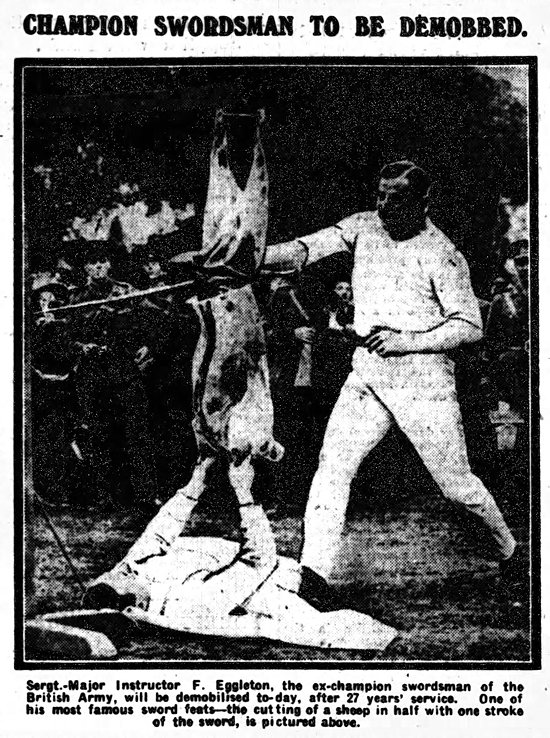
Birmingham Gazette - Apr 16, 1920
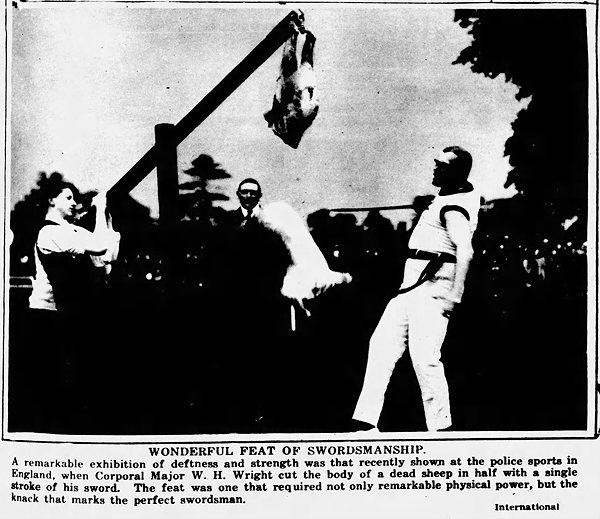
Ithaca Journal - Sep 23, 1922
Posted By: Alex - Wed Apr 06, 2022 -
Comments (6)
Category: Animals, Weapons
Ideal Fighter Jet Toy
Posted By: Paul - Sat Mar 26, 2022 -
Comments (2)
Category: Toys, War, Weapons, 1950s
Ann Frickman, Sharpshooter
During World War II, one of the best rifle shots in the United States was a housewife — Ann Frickman. Remarkably, she hadn't grown up shooting rifles. She first picked up a rifle in her late twenties, and eighteen months later she was beating the Army's top sharpshooters.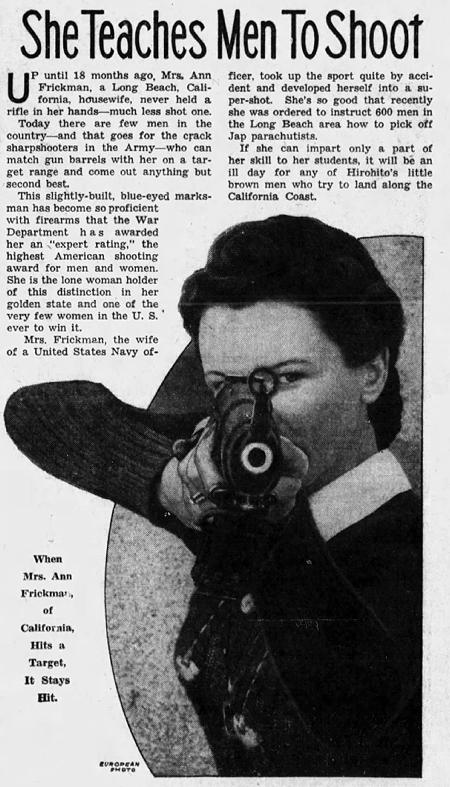
San Francisco Examiner - Dec 20, 1942
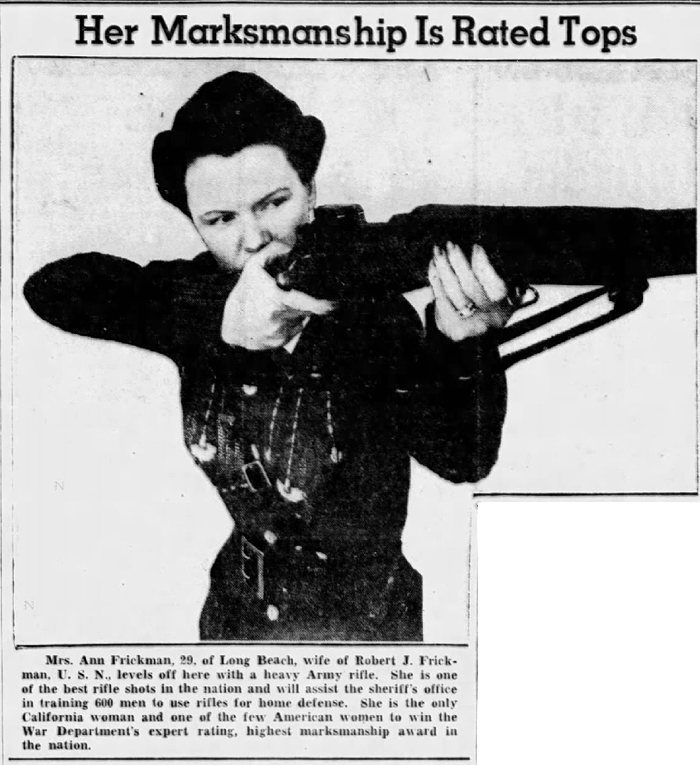
Pasadena Star News - Feb 24, 1942
Posted By: Alex - Tue Feb 15, 2022 -
Comments (0)
Category: 1940s, Women, Weapons
The Voice Bomb
This is another example of the military's interest in using sound to demoralize the enemy. This device was rather straightforward: "Dropped from a plane, the balloon bomb would drift to earth while the recorder blared out surrender demands or other morale-breaking messages to the enemy."See also: Weird alien sounds designed to terrify and panic, and Ghost Tape Number Ten
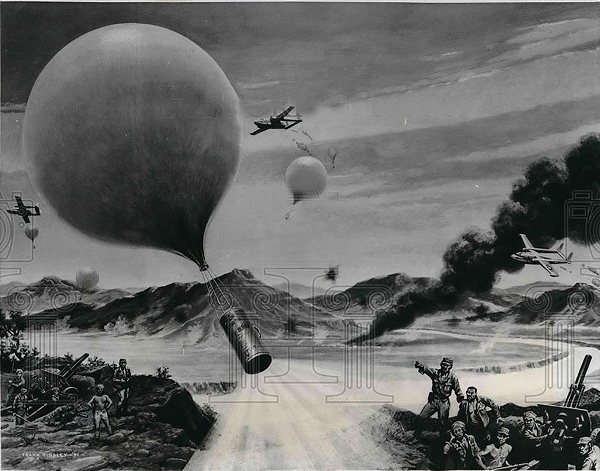

The Pantagraph - Oct 12, 1951
Posted By: Alex - Tue Sep 07, 2021 -
Comments (4)
Category: Psychology, 1950s, Weapons
Mystery Illustration 102
What type of publication is this dramatic illustration from? A true-crime magazine? A government report on urban violence? Publicity for a cop movie?The answer is here.
Or after the jump.
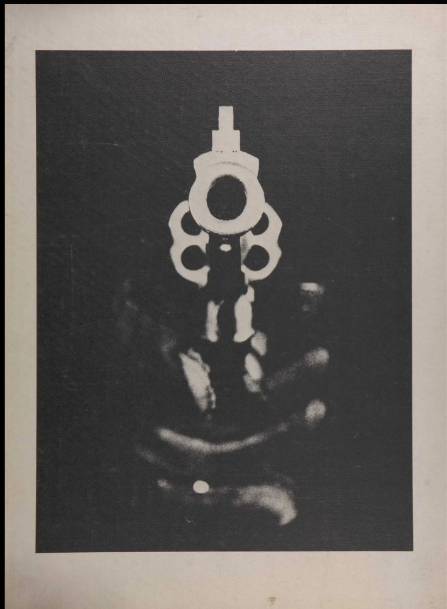
More in extended >>
Posted By: Paul - Sat Aug 07, 2021 -
Comments (3)
Category: Photography and Photographers, 1970s, Weapons
Square-Wheeled Tank
In 1957, Albert Sfredda secured a patent (No. 2,786,540) for a square-wheeled tank. He explained: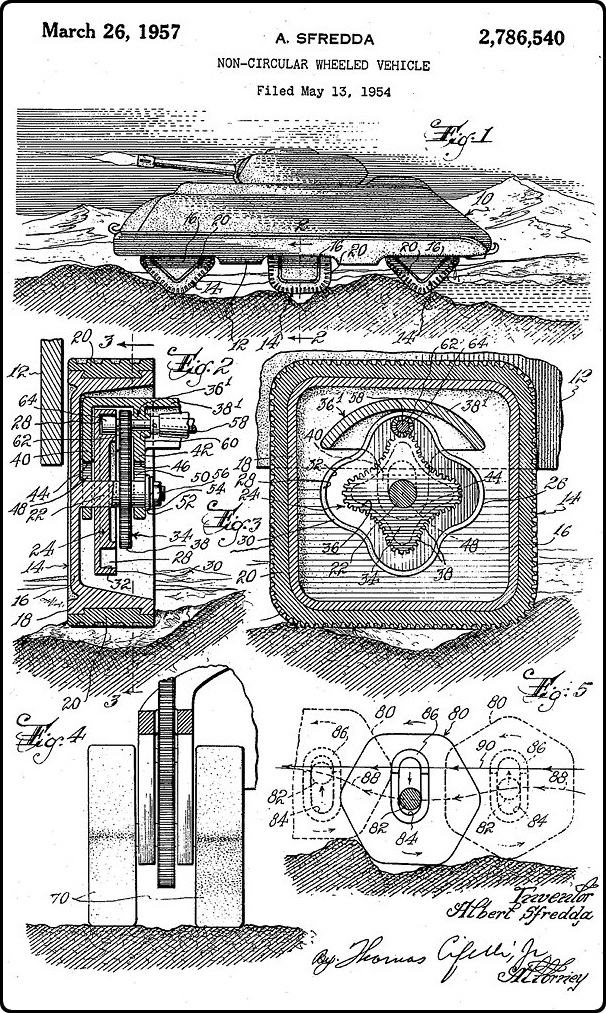
Sfredda was correct that square wheels would provide better traction on rough terrain than circular wheels would. The video below explains why. But the problem, of course, was that his tank would have difficulty moving on a regular, flat road.
Along similar lines, Macalester College has had a square-wheeled bicycle on permanent display since 1997. More info: macalester.edu
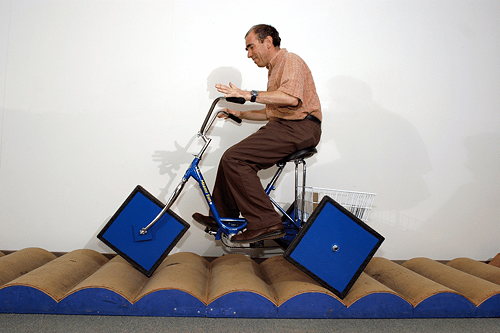
image source: StanWagon.com
Posted By: Alex - Wed Jul 21, 2021 -
Comments (2)
Category: Motor Vehicles, War, Weapons, Patents, 1950s

| Who We Are |
|---|
| Alex Boese Alex is the creator and curator of the Museum of Hoaxes. He's also the author of various weird, non-fiction, science-themed books such as Elephants on Acid and Psychedelic Apes. Paul Di Filippo Paul has been paid to put weird ideas into fictional form for over thirty years, in his career as a noted science fiction writer. He has recently begun blogging on many curious topics with three fellow writers at The Inferior 4+1. Contact Us |




